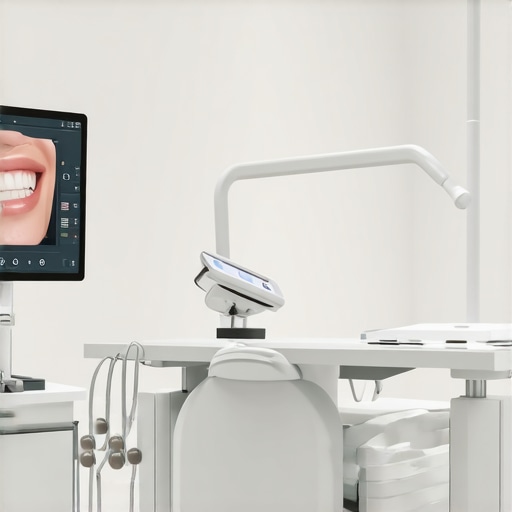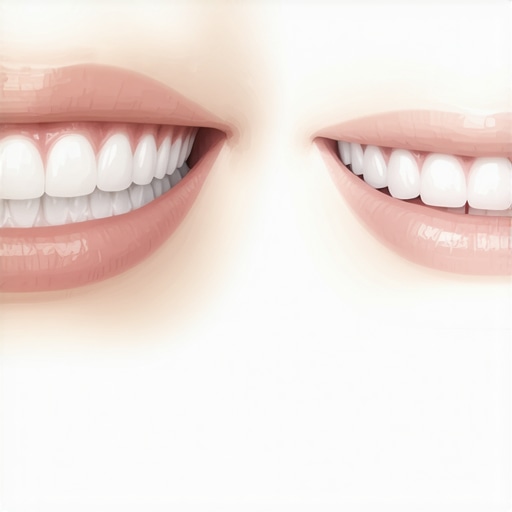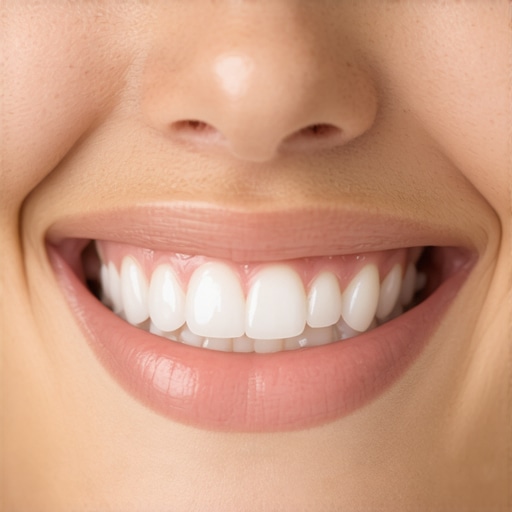Unveiling the Synergy of Invisalign and Veneers: A Paradigm Shift in Smile Correction
In the realm of advanced aesthetic dentistry, the integration of Invisalign and veneers exemplifies a sophisticated approach to achieving optimal dental harmony. As we navigate the nuances of 2024’s cutting-edge techniques, understanding the strategic application of these modalities is essential for clinicians aiming to deliver transformative results rooted in scientific precision and patient-centric care.
Decoding the Interplay of Orthodontic Precision and Aesthetic Enhancement
Invisalign, renowned for its discreet orthodontic correction, addresses complex malocclusions with digital precision. Conversely, veneers serve as a versatile tool for aesthetic refinement, reshaping tooth contours, correcting discoloration, and closing diastemas. When combined, these treatments form a comprehensive protocol that can rectify functional anomalies while elevating aesthetic appeal—an approach validated by recent clinical studies in the Journal of Esthetic and Restorative Dentistry.
Strategic Sequencing for Optimal Outcomes: Before or After?
What is the optimal sequencing—placing veneers before or after Invisalign treatment—to maximize durability and aesthetic harmony?
Expert consensus suggests that initiating with Invisalign can effectively align teeth, creating a stable foundation for subsequent veneer placement. This sequencing reduces the risk of veneer failure due to misalignment or residual malocclusion. However, certain cases benefit from pre-veneers orthodontics, particularly when significant crowding or rotations are present. A tailored treatment plan, guided by digital smile design software, ensures predictable results and longevity.
Material Science and Technological Advances: Elevating Smile Rehabilitation
Modern veneers utilize ultra-thin porcelain or composite materials with enhanced translucency and biocompatibility, allowing for conservative preparation. When integrated with Invisalign’s advanced aligners—featuring improved material resilience and digital customization—clinicians can achieve a harmonious blend of functional correction and aesthetic perfection. Staying abreast of innovations, such as Invisalign’s latest innovations, is crucial for delivering state-of-the-art care.
Addressing Complex Patient Expectations and Ethical Considerations
Patients increasingly seek minimally invasive solutions with rapid results, yet realistic expectations must be managed through transparent communication. The ethical deployment of Invisalign and veneers mandates comprehensive diagnostics, including 3D imaging and digital mock-ups, ensuring informed consent and treatment predictability.
How does the integration of digital workflow tools enhance clinician confidence and patient satisfaction in combined Invisalign-veneer protocols?
Digital workflows facilitate precise planning, simulate aesthetic outcomes, and streamline communication, significantly reducing surprises and adjustments during treatment. This technological synergy fosters trust and elevates the standard of care, especially in complex cases demanding meticulous coordination.
For further insights into aesthetic dentistry advancements, explore Veneers Made Simple. To share your expert experiences or ask specific questions, consider engaging with our professional community or consulting peer-reviewed publications such as the American Academy of Cosmetic Dentistry journal.
In conclusion, the mastery of integrating Invisalign and veneers in 2024 hinges on a deep understanding of material science, digital technology, and patient-centered planning—cornerstones for achieving predictable, durable, and stunning smile transformations.
Leveraging Digital Workflows to Elevate Smile Transformation Outcomes
In the rapidly evolving world of aesthetic dentistry, the integration of digital technology has revolutionized how clinicians plan and execute smile makeovers involving Invisalign and veneers. Digital workflows, including 3D imaging, virtual mock-ups, and CAD/CAM design, enable a level of precision previously unattainable. These tools allow practitioners to simulate the final aesthetic outcome with remarkable accuracy, setting realistic expectations and enhancing patient satisfaction.
One of the key advantages of digital planning is its ability to facilitate a seamless interdisciplinary approach. For example, digital smile design software can align the orthodontic movements with the planned veneer contours, ensuring functional harmony and aesthetic excellence. This holistic view reduces treatment time, minimizes adjustments, and enhances durability of the results—factors critical for long-term success.
Moreover, the advent of digital occlusal analysis tools helps identify and address functional issues that may compromise the longevity of veneers or Invisalign treatment. By integrating these technologies into practice, clinicians can preemptively troubleshoot potential problems, thus optimizing treatment protocols and reducing the risk of failure.
Challenging Conventional Wisdom: Is Sequential Treatment Always Best?
Could simultaneous Invisalign and veneer treatment offer superior results compared to traditional sequential approaches?
Emerging evidence suggests that in select cases, a combined approach—where orthodontics and cosmetic restorations are planned concurrently—may lead to more harmonious and efficient outcomes. This paradigm shift challenges the traditional staged methodology, which often involves completing orthodontic correction before proceeding to aesthetic enhancements. Advanced digital planning software now makes it feasible to visualize and execute this integrated approach, ensuring each step complements the other.
Implementing simultaneous treatment demands a high level of expertise, meticulous planning, and patient commitment. However, when executed correctly, it can reduce overall treatment time, improve aesthetic continuity, and increase patient satisfaction. To explore how integrated treatment protocols can be tailored to individual cases, dental professionals are encouraged to consult comprehensive resources like Invisalign and veneers: top smile transformation tips for 2024.

How Can Evidence-Based Practice and Patient Education Drive Better Outcomes?
Adopting an evidence-based approach, grounded in the latest research such as the findings published in the Journal of Esthetic and Restorative Dentistry, ensures that clinicians provide treatments backed by scientific rigor. Equally important is transparent patient education—using digital mock-ups and visual aids—to foster trust and informed decision-making.
Enhancing patient understanding of the treatment process, expected outcomes, and maintenance strategies not only improves compliance but also sets the stage for more durable results. For further insights into how digital tools can optimize patient engagement, consider exploring teeth whitening secrets for a sparkling smile in 2025.
Are you ready to integrate cutting-edge digital solutions into your smile transformation practice? Share your thoughts or experiences in the comments section, or reach out via our contact page for personalized guidance.
Harnessing the Power of Digital Smile Design for Customized Treatment Planning
Incorporating **digital smile design (DSD)** tools revolutionizes how clinicians approach combined Invisalign and veneer protocols. These sophisticated software platforms enable a virtual simulation of the final aesthetic outcome, incorporating patient-specific anatomical data and aesthetic preferences. By leveraging DSD, practitioners can pre-visualize potential challenges, optimize tooth movements, and determine the precise veneer contours needed to achieve a natural, harmonious smile.
Moreover, DSD facilitates interdisciplinary collaboration, allowing orthodontists and restorative dentists to work within a unified digital environment. This integration ensures that each phase of treatment complements the other, reducing the likelihood of post-treatment adjustments and enhancing overall predictability. As digital technology continues to evolve, staying proficient in these tools is paramount for delivering state-of-the-art care that aligns with patient expectations.
Addressing the Nuances of Occlusal Considerations in Combined Treatments
One of the most complex aspects of integrating Invisalign with veneers involves managing **occlusal dynamics**. Precise occlusal planning ensures that the final restored dentition maintains functional harmony, minimizes undue stress on the temporomandibular joint, and prolongs veneer longevity. Advanced digital occlusal analysis, including intraoral scanners paired with finite element analysis, offers insights into stress distribution and potential interference points.
For example, in cases where significant anterior esthetic correction is desired, clinicians must carefully evaluate whether orthodontic movements will alter the vertical dimension or incisal guidance. Adjustments may be necessary to prevent excessive load on veneers, which could compromise their durability. Incorporating this detailed analysis into treatment planning underscores the importance of a multidisciplinary, evidence-based approach to complex smile makeovers.
What are the best practices for integrating occlusal analysis into the Invisalign-veneers treatment workflow to prevent post-restorative complications?
Best practices include utilizing digital bite registration, dynamic occlusal tracking, and predictive modeling to anticipate and mitigate functional conflicts before finalizing restorations. Consulting with occlusion specialists and employing iterative virtual mock-ups can further refine the treatment plan, ultimately leading to more durable and functionally sound outcomes.

Innovations in Material Science: Enhancing the Longevity and Aesthetics of Veneers
Recent advancements in **esthetic materials** have significantly improved the performance and appearance of veneers. Ultra-thin, high-translucency porcelain, such as lithium disilicate and zirconia-reinforced composites, combine strength with natural translucency, enabling conservative preparations while achieving lifelike results. When paired with computer-aided manufacturing (CAM) technology, these materials allow for highly precise fabrication, reducing chairside time and improving fit accuracy.
On the orthodontic side, innovations in aligner materials—such as increased elasticity, wear resistance, and improved clarity—support complex movements and enhance patient comfort. The integration of these cutting-edge materials ensures that both functional correction and aesthetic enhancement are durable, biocompatible, and meet the highest standards of modern dentistry.
The Role of Patient-Centered Communication in Complex Smile Makeovers
Effective communication remains the cornerstone of successful treatment outcomes. Visual aids such as 3D mock-ups, digital simulations, and before-and-after photos help align patient expectations with achievable results. Educating patients about the **limitations and advantages** of combined Invisalign and veneer treatments fosters trust and ensures informed consent.
Additionally, discussing maintenance routines, possible touch-ups, and longevity expectations empowers patients to take an active role in preserving their smile. Incorporating motivational interviewing techniques during consultations can further enhance patient adherence to post-treatment care, ultimately extending the lifespan of both orthodontic and restorative work.
How can clinicians leverage patient feedback during treatment to optimize aesthetic and functional outcomes?
Regularly soliciting patient input through digital progress reviews, satisfaction surveys, and open dialogue allows for timely adjustments and personalized refinements. This iterative approach enhances patient satisfaction and ensures that the final outcome aligns with their aesthetic desires and functional needs.
For clinicians eager to deepen their expertise in these advanced protocols, engaging with peer-reviewed journals such as the Journal of the American Dental Association provides invaluable insights into emerging research and clinical best practices. Ready to elevate your practice? Embrace digital innovation, refine your occlusal strategies, and prioritize patient-centered care to deliver unparalleled smile transformations in 2024 and beyond.
Harnessing Cutting-Edge Digital Technologies to Refine Smile Design Precision
In the quest for impeccable aesthetic results, the utilization of advanced digital smile design (DSD) platforms offers unprecedented customization, allowing clinicians to simulate intricate movements of orthodontic aligners alongside precise veneer contours. This synergy not only enhances predictability but also streamlines interdisciplinary collaboration, ensuring that each phase of treatment is meticulously aligned with the patient’s unique aesthetic and functional needs.
Addressing Biomechanical Challenges in Combined Orthodontic and Restorative Procedures
One of the critical complexities in integrating Invisalign with veneers involves managing the biomechanical stress distribution across the dentition. Modern finite element analysis (FEA) tools enable practitioners to preemptively identify potential overload zones, facilitating strategic adjustments to aligner design and veneer placement. This proactive approach minimizes risks such as veneer debonding or occlusal trauma, ensuring long-term stability.
What Are the Latest Materials Driving Durability and Aesthetic Excellence in Veneers?
Innovations in material science have led to the development of ultra-thin, high-strength porcelains like lithium disilicate and zirconia-reinforced composites. These materials provide exceptional translucency and color stability while enabling conservative preparations. When coupled with digital fabrication techniques, such as CAD/CAM, practitioners can achieve highly precise, durable restorations that seamlessly blend with the natural dentition, elevating the overall outcome of combined treatments.
Enhancing Patient Engagement Through Virtual Reality and Augmented Reality Technologies
Emerging immersive technologies, including virtual reality (VR) and augmented reality (AR), are revolutionizing patient education by providing real-time visualizations of potential treatment outcomes. These tools foster better understanding, manage expectations effectively, and increase patient confidence in complex procedures involving Invisalign and veneers, ultimately leading to higher satisfaction and compliance.
How Does the Integration of Occlusal Analysis Optimize Long-Term Treatment Success?
Comprehensive digital occlusal analysis, integrating intraoral scanning with dynamic tracking and predictive modeling, allows clinicians to create functional occlusion plans that account for masticatory forces and temporomandibular joint health. Implementing these insights during treatment planning ensures that the final restorations do not compromise occlusal harmony, thereby reducing the incidence of post-treatment complications and enhancing the longevity of both orthodontic and restorative components.
What are the most effective strategies for coordinating orthodontic movements with restorative plans to prevent post-treatment occlusal issues?
Strategies include utilizing iterative virtual mock-ups, involving occlusion specialists early, and employing dynamic bite registration tools. Continuous digital feedback loops facilitate real-time adjustments, ensuring that movements align precisely with planned veneer contours and functional parameters, thus safeguarding against adverse occlusal interactions.

Future Directions: Bioprinting and Smart Materials in Aesthetic Dentistry
Looking ahead, the integration of bioprinting technologies and smart materials promises to revolutionize restorative dentistry. Bioprinted tissues can facilitate personalized, biocompatible veneer substrates, while smart materials capable of responding to environmental stimuli may offer self-healing and adaptive properties, pushing the boundaries of smile rehabilitation toward regenerative and dynamic solutions.
Conclusion: Elevating Clinical Excellence Through Multidisciplinary Innovation
In summary, mastering the sophisticated integration of Invisalign and veneers in 2024 necessitates a nuanced understanding of digital workflows, biomechanical principles, innovative materials, and patient-centered communication. Embracing these technological and scientific advancements empowers clinicians to deliver smile transformations that are not only aesthetically stunning but also functionally resilient and enduring, setting new benchmarks in aesthetic dentistry.
Expert Insights & Advanced Considerations
1. Digital Precision Enhances Predictability
Utilizing advanced digital smile design software allows clinicians to simulate complex movements and aesthetic outcomes with remarkable accuracy, reducing guesswork and increasing treatment success rates.
2. Occlusal Dynamics Are Critical for Longevity
Integrating digital occlusal analysis ensures that functional harmony is maintained, minimizing risks of veneer debonding or temporomandibular joint issues during combined Invisalign and veneer treatments.
3. Material Science Drives Durability
Adoption of high-strength, translucent ceramics like lithium disilicate and zirconia composites enhances veneer longevity while preserving esthetic excellence, especially when fabricated through CAD/CAM technology.
4. Simultaneous Treatment Models Show Promise
Emerging evidence suggests that concurrent orthodontic and restorative procedures, supported by precise digital planning, can shorten overall treatment time and improve aesthetic integration compared to traditional staged approaches.
5. Patient Engagement Through Virtual Technologies
Leveraging virtual reality and augmented reality tools enhances patient understanding, manages expectations, and fosters trust, ultimately leading to higher satisfaction with complex smile makeovers.
Curated Expert Resources
- Journal of Esthetic and Restorative Dentistry: Offers peer-reviewed research on cutting-edge techniques and clinical outcomes relevant to Invisalign and veneer integration.
- American Academy of Cosmetic Dentistry (AACD): Provides guidelines, case studies, and continuing education resources for advanced aesthetic procedures.
- Invisalign Innovation Updates: Official updates on the latest aligner materials, digital workflows, and treatment protocols that influence clinical decision-making.
- Dental Materials Science Journals: Cover advancements in high-performance ceramics and composites used in veneer fabrication.
- Digital Smile Design (DSD) Platforms: Software solutions for pre-visualization and treatment planning that facilitate interdisciplinary collaboration.
Final Expert Perspective
The integration of Invisalign and veneers in 2024 exemplifies the pinnacle of modern aesthetic dentistry, where digital precision, material science, and interdisciplinary collaboration converge to deliver predictable, durable, and highly personalized smile transformations. Embracing these advanced insights and resources empowers clinicians to elevate their practice and achieve exceptional patient outcomes. Engage with the community by sharing your experiences or exploring further at our contact page and stay at the forefront of innovation in smile enhancement.

